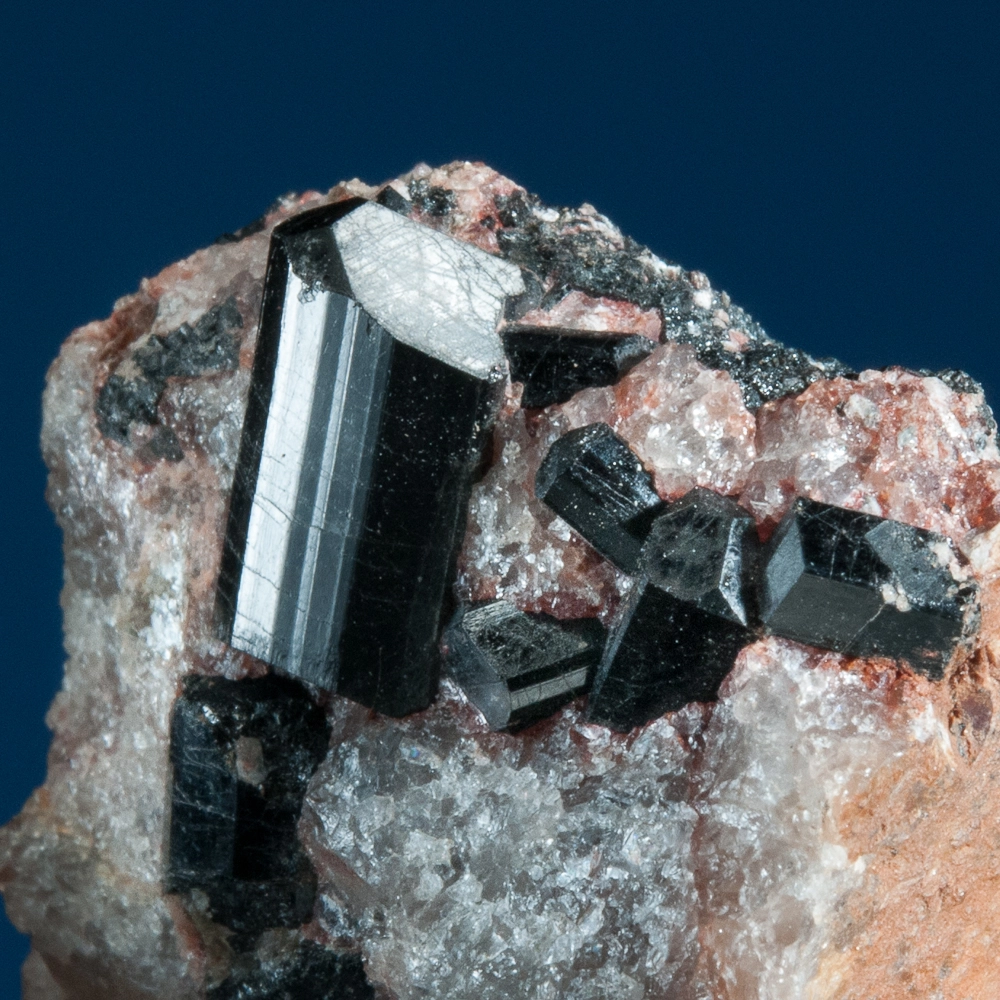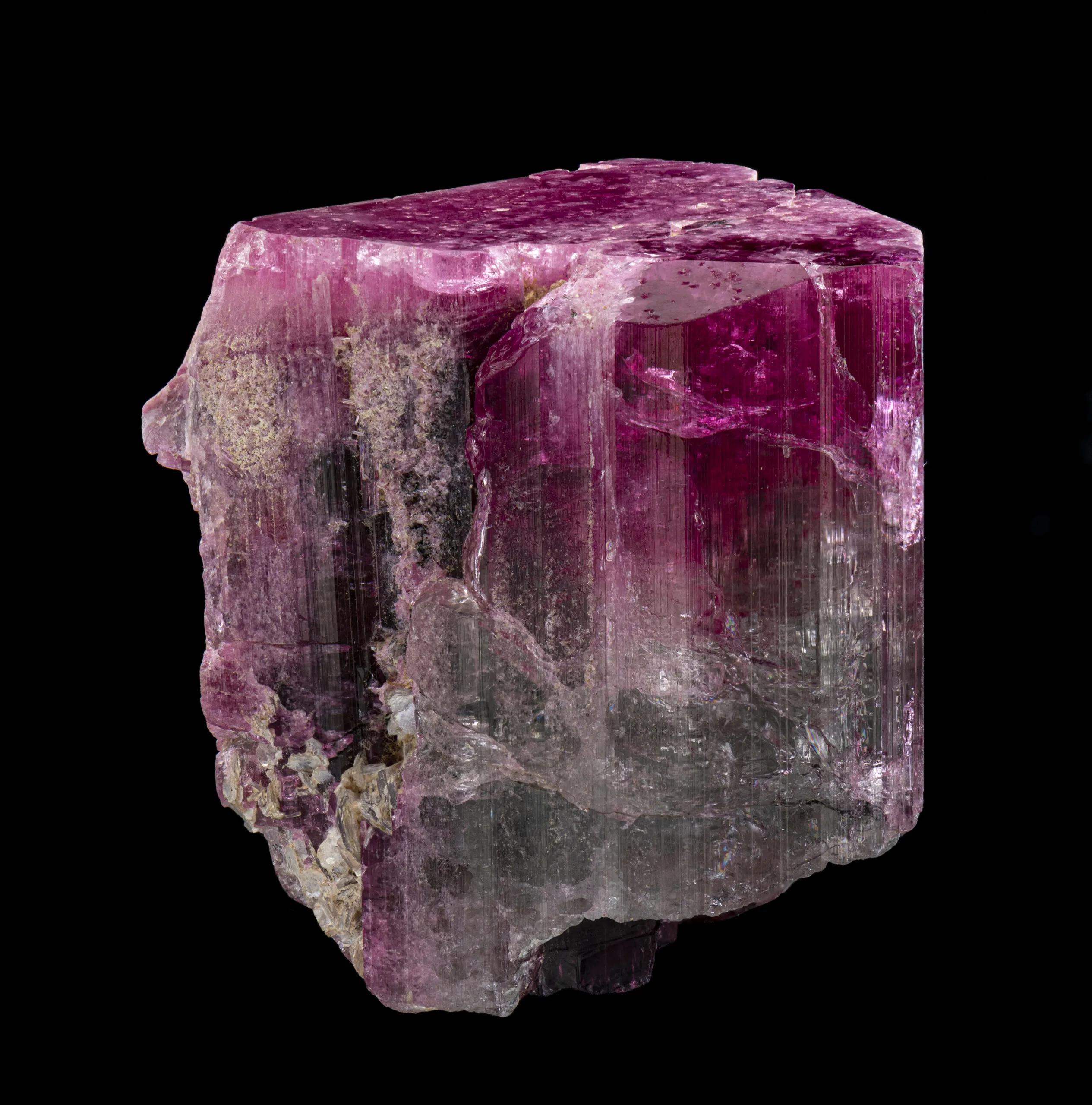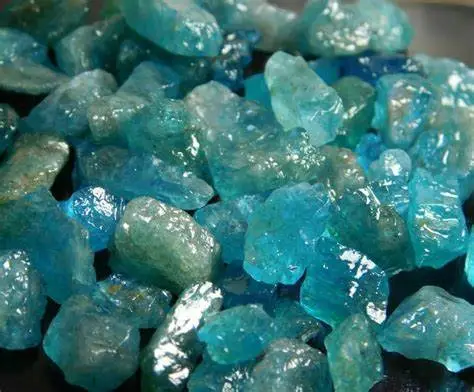Tourmaline, a captivating gemstone known for its vibrant colors and unique properties, has been cherished by cultures around the world for centuries. Its name is derived from the Sinhalese word "Turmali," meaning "mixed colors," which aptly describes its diverse color spectrum. Tourmaline is a crystalline boron silicate mineral compounded with elements such as aluminum, iron, magnesium, sodium, lithium, or potassium. This mineral is renowned for its wide range of colors, which can vary even within a single crystal, making it a favorite among gem enthusiasts and collectors.
Tourmaline's significance extends beyond its aesthetic appeal. It is believed to possess various metaphysical properties, including the ability to promote emotional balance, enhance energy, and provide protection. In this blog, we will explore the different types of tourmaline, focusing on their characteristics, historical significance, uses, healing properties, and metaphysical aspects.
Schorl Tourmaline (Black Tourmaline)

Characteristics
Schorl, or Black Tourmaline, is the most common variety of tourmaline, accounting for about 95% of all tourmaline found in nature. It is characterized by its deep black color, which is due to the presence of iron. Schorl is typically opaque and exhibits a vitreous to resinous luster.
Historical Significance and Uses
Historically, Schorl has been used as a protective stone. In ancient times, it was believed to ward off evil spirits and negative energies. It has been used in various cultures for grounding and protection rituals. Today, Schorl is often used in jewelry and as a decorative stone in homes and offices.
Healing Properties and Metaphysical Aspects
Schorl is renowned for its grounding properties. It is believed to provide a protective shield against electromagnetic radiation and negative energies. Many people use Schorl to balance their root chakra, promoting a sense of security and stability. It is also thought to enhance physical vitality and emotional resilience.
Elbaite Tourmaline (Lithium Tourmaline)

Characteristics
Elbaite is a lithium-rich variety of tourmaline that comes in a wide range of colors, including pink, red, green, blue, and colorless. It is known for its transparency and vibrant hues, making it a popular choice for gemstones.
Historical Significance and Uses
Elbaite was first discovered on the island of Elba, Italy, in the 19th century. It quickly gained popularity in the gemstone market due to its striking colors and clarity. Elbaite is commonly used in fine jewelry, including rings, necklaces, and earrings.
Healing Properties and Metaphysical Aspects
Elbaite is believed to promote emotional healing and balance. It is associated with the heart chakra and is thought to encourage compassion, love, and understanding. Elbaite is also said to enhance creativity and inspire artistic expression.
Rubellite Tourmaline (White Ghost)

Characteristics
Rubellite, often referred to as "White Ghost," is a red to pink variety of tourmaline. Its color can range from pale pink to deep red, and it is highly prized for its vibrant hues and clarity.
Historical Significance and Uses
Rubellite has been valued throughout history for its beauty and rarity. It was often used in royal jewelry and was believed to symbolize passion and vitality. Today, Rubellite is a popular choice for engagement rings and other fine jewelry pieces.
Healing Properties and Metaphysical Aspects
Rubellite is associated with the heart chakra and is believed to promote love, compassion, and emotional healing. It is thought to enhance self-confidence and encourage positive relationships. Rubellite is also said to stimulate the immune system and promote overall well-being.
Indicolite Tourmaline (Blue Tourmaline)

Characteristics
Indicolite is a blue variety of tourmaline, ranging from light blue to deep indigo. It is known for its transparency and striking color, making it a sought-after gemstone.
Historical Significance and Uses
Indicolite has been used in jewelry for centuries, admired for its unique color and clarity. It is often used in high-end jewelry designs and is considered a symbol of tranquility and peace.
Healing Properties and Metaphysical Aspects
Indicolite is associated with the throat chakra and is believed to enhance communication and self-expression. It is thought to promote calmness and clarity of thought, making it a popular choice for meditation and spiritual practices.
Paraíba Tourmaline

Characteristics
Paraíba Tourmaline is a rare and highly prized variety of tourmaline known for its vivid blue to green hues, often described as "electric" or "neon." Its unique color is due to the presence of copper.
Historical Significance and Uses
Discovered in the late 1980s in the Brazilian state of Paraíba, this tourmaline quickly gained fame for its extraordinary color. It is considered one of the most valuable gemstones in the world and is often used in exclusive jewelry pieces.
Healing Properties and Metaphysical Aspects
Paraíba Tourmaline is believed to enhance creativity and intuition. It is associated with the third eye chakra and is thought to promote spiritual insight and awareness. Paraíba Tourmaline is also said to encourage positive transformation and personal growth.
Verdelite Tourmaline (Green Tourmaline)

Characteristics
Verdelite, or Green Tourmaline, is known for its vibrant green color, which can range from light to dark shades. It is often transparent and exhibits a vitreous luster.
Historical Significance and Uses
Green Tourmaline has been used in jewelry for centuries and is often associated with nature and growth. It is a popular choice for rings, pendants, and earrings.
Healing Properties and Metaphysical Aspects
Verdelite is associated with the heart chakra and is believed to promote compassion, healing, and balance. It is thought to enhance vitality and encourage a sense of harmony with nature. Verdelite is also said to support emotional healing and personal growth.
Dravite Tourmaline (Brown Tourmaline)

Characteristics
Dravite, or Brown Tourmaline, is characterized by its brown to dark brown color. It is typically opaque and exhibits a resinous to vitreous luster.
Historical Significance and Uses
Dravite has been used as a grounding stone in various cultures. It is often used in meditation and spiritual practices to promote stability and balance.
Healing Properties and Metaphysical Aspects
Dravite is associated with the root chakra and is believed to provide grounding and protection. It is thought to promote emotional stability and enhance physical endurance. Dravite is also said to encourage self-reflection and personal growth.
Watermelon Tourmaline

Characteristics
Watermelon Tourmaline is a unique variety of tourmaline that exhibits a pink center surrounded by a green outer layer, resembling a watermelon. It is highly prized for its distinctive appearance and is often used in jewelry.
Historical Significance and Uses
Watermelon Tourmaline has been admired for its beauty and rarity. It is often used in jewelry designs that highlight its natural color gradient, such as pendants and earrings.
Healing Properties and Metaphysical Aspects
Watermelon Tourmaline is associated with the heart chakra and is believed to promote love, joy, and emotional healing. It is thought to balance the energies of the heart and encourage positive relationships. Watermelon Tourmaline is also said to enhance creativity and inspire artistic expression.
Conclusion
Tourmaline is a gemstone of remarkable diversity and beauty, with each variety offering its own unique characteristics and metaphysical properties. From the protective qualities of Schorl to the vibrant hues of Paraíba, tourmaline continues to captivate and inspire. Whether used in jewelry, meditation, or healing practices, tourmaline remains a cherished gemstone that embodies the beauty and complexity of the natural world. Its rich history and significance make it a timeless treasure, celebrated by cultures around the globe.








